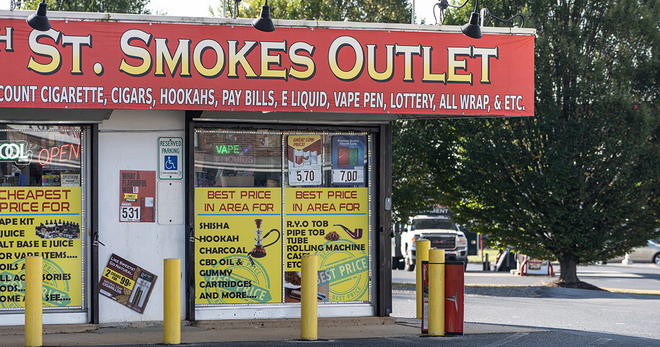Vaporized: Majority of youth exposed to e-cigarette advertising
More than eight of 10 youth and young adults saw e-cigarette advertising in 2015, according to Vaporized: Youth and Young Adult Exposure to E-Cigarette Marketing, a new report from Truth Initiative. The paper, which updates a 2014 analysis by the public health organization, also highlights that e-cigarette advertising expenditures increased significantly -- by 52 percent -- from 2013-2014, reaching $115.3 million in 2014.
82%
82% of 12-17 year olds reported having seen an e-cigarette ad in 2015
Awareness of e-cigarette advertisements remains highest in retail establishments (convenience stores, supermarkets, or gas stations), followed by on television and online. Television was the second biggest source of e-cigarette advertising with approximately 50 percent of youth reporting seeing an ad, suggesting advertisers may be purposefully reaching this audience. Traditional cigarette advertising has not been permitted on television since 1971.
“It’s no accident that spending on e-cigarette marketing has increased by more than 50 percent and that a majority of youth have seen these ads,” said Robin Koval, CEO and President of Truth Initiative.
This research is set against a backdrop of increasing youth e-cigarette use. According to the Centers for Disease Control and Prevention, there have been large increases in e-cigarette use among youth from 2011 to 2014, and a Monitoring the Future survey funded by the National Institute of Drug Abuse reported in 2014 that past 30-day e-cigarette use was higher for 8th, 10th and 12th graders than past 30-day cigarette use.
The Food and Drug Administration currently regulates cigarettes, cigarette tobacco, roll-your-own tobacco, and smokeless tobacco products. The agency also has the ability to regulate additional tobacco products, including e-cigarettes, and appears to be close to asserting jurisdiction over them through what is known as the deeming rule. Until then, e-cigarettes are not subject to any federal standards for quality or safety and there are no marketing restrictions.
Key takeaways
88 percent of 18-21 year olds reported having seen an e-cigarette ad in 2015 – more than youth 12-17 (82%).
E-cigarette advertising expenditures increased significantly by 52 percent from 2013-2014, reaching $115.3 million in 2014.
The top 10 e-cigarette brands with the highest advertising expenditure in 2013 and 2014 account for 98 percent of total category spend.
Five brands (blu, MarkTen, NJOY, Vuse and Fin) account for 95 percent of total category spend. The three brands with highest advertising expenditure in 2014 — MarkTen, blu, and Vuse — are all owned by Big Tobacco companies.
The brand with the highest 2014 spending – MarkTen – increased its spending from $431,000 in 2013 to $54 million in 2014. MarkTen far outspent any other brand in 2014.
In 2014, MarkTen and blu accounted for nearly all of the $83 million in magazine expenditures. blu, Vuse, and NJOY accounted for nearly all of the $22 million in cable television expenditures.
More in tobacco industry marketing
Want support quitting? Join EX Program
By clicking JOIN, you agree to the Terms, Text Message Terms and Privacy Policy.
Msg&Data rates may apply; msgs are automated.


